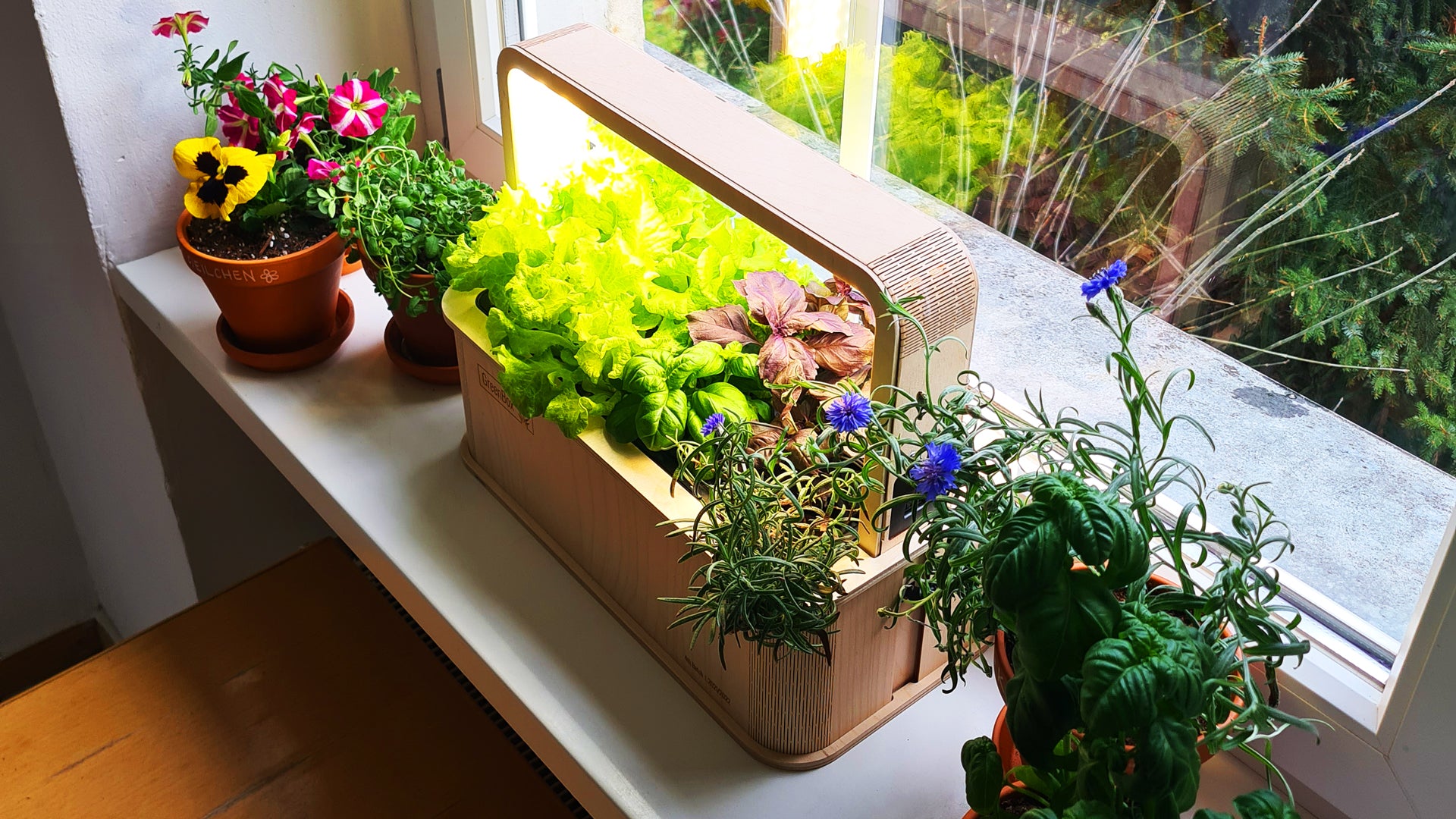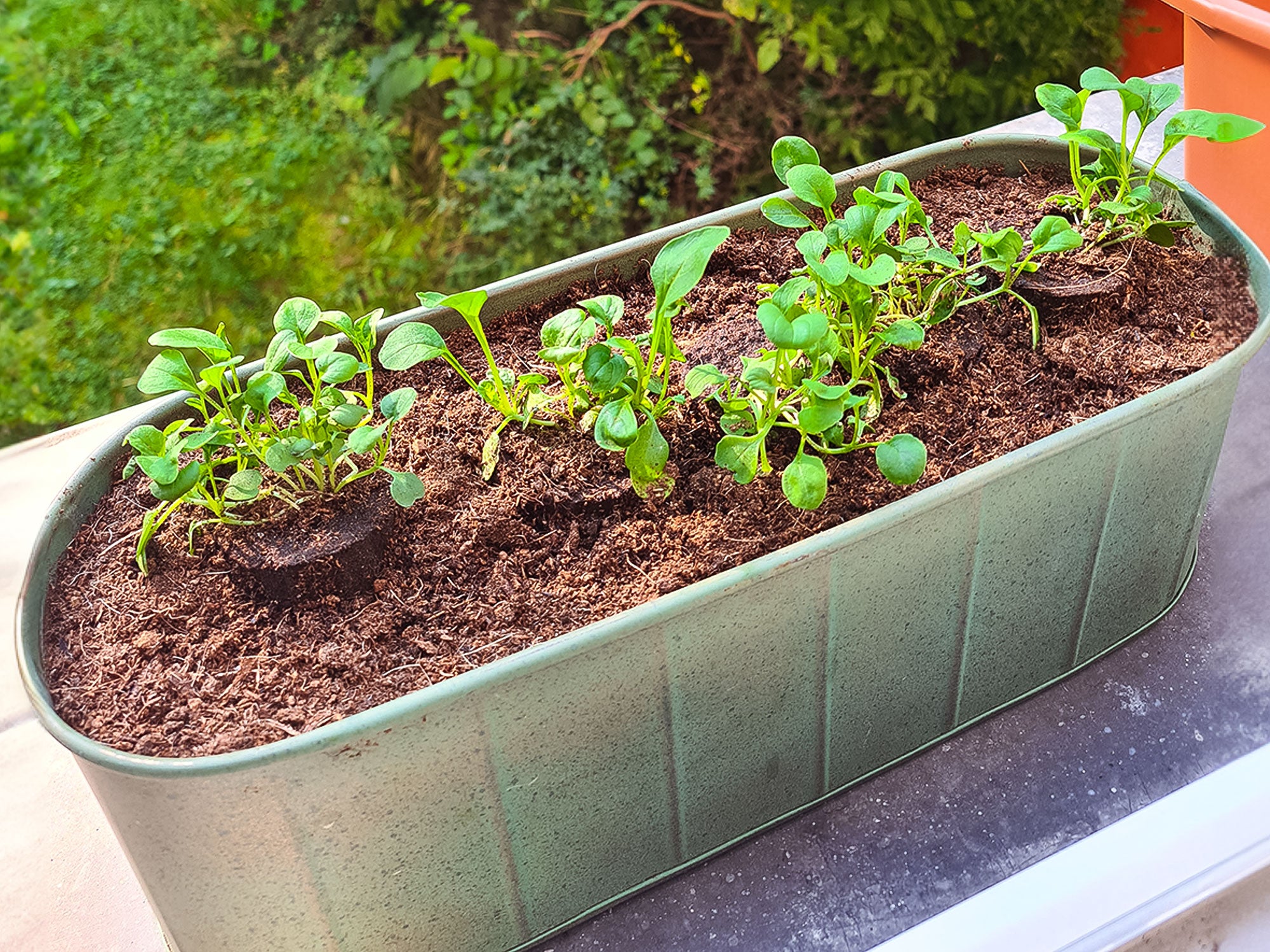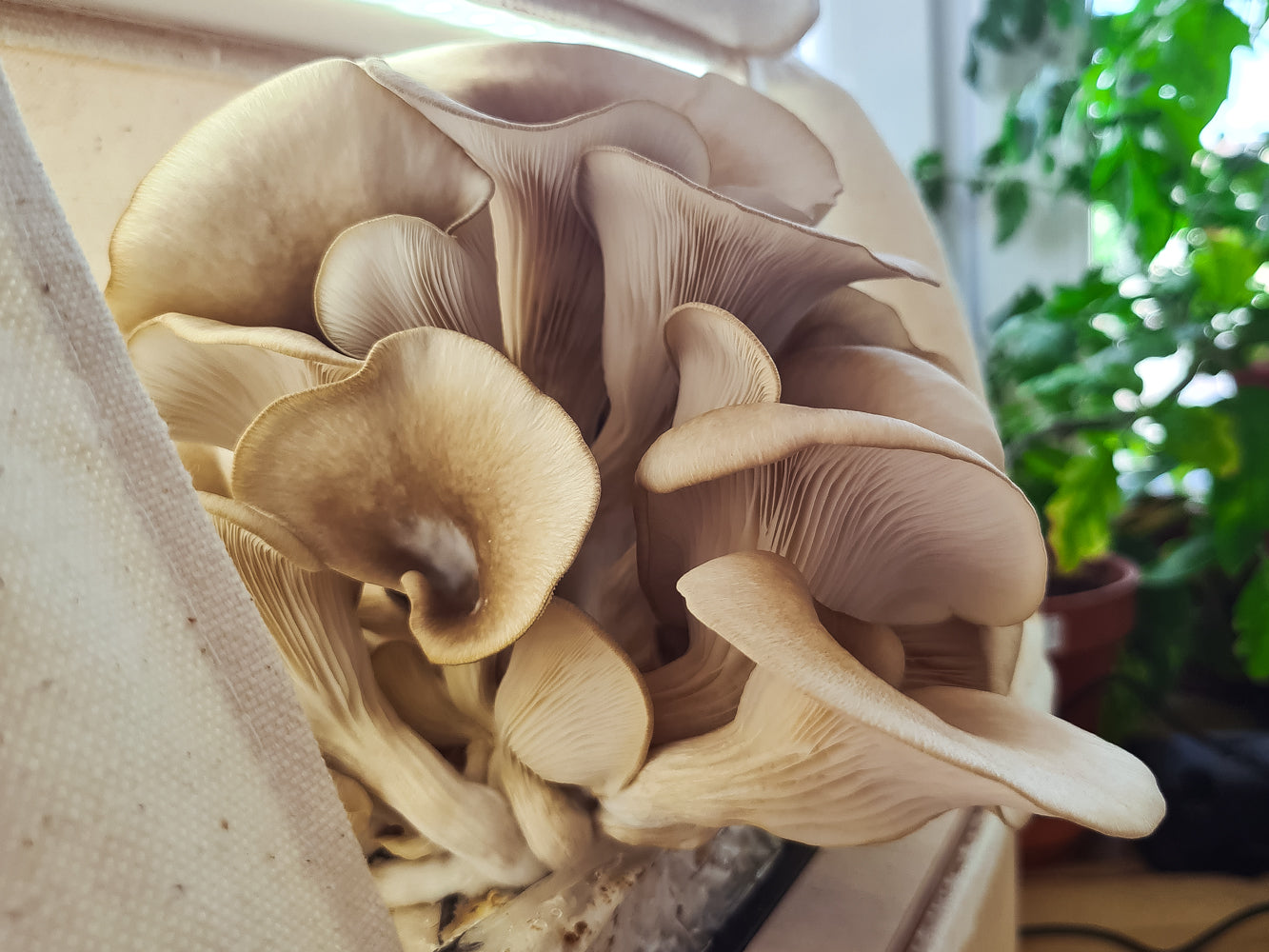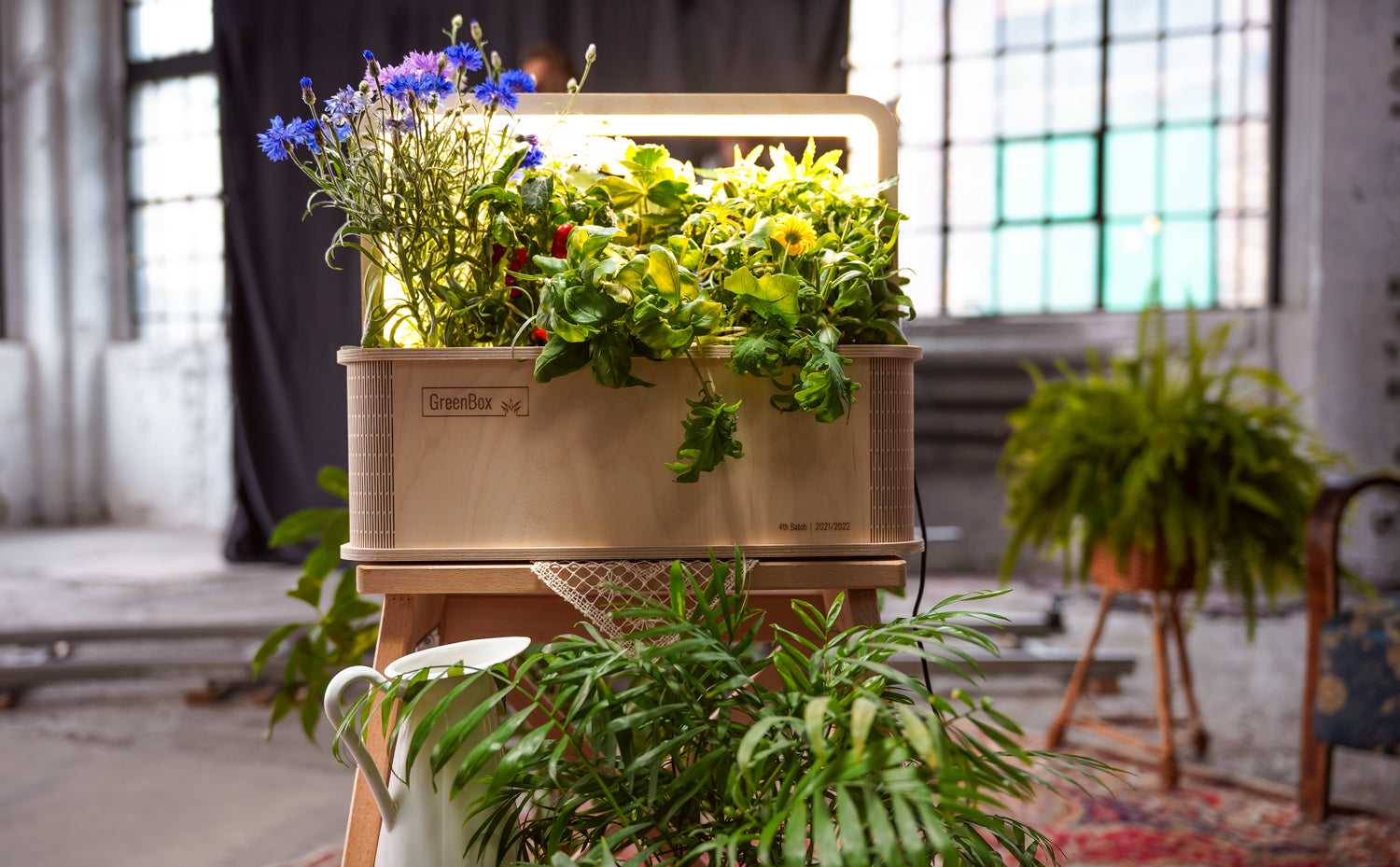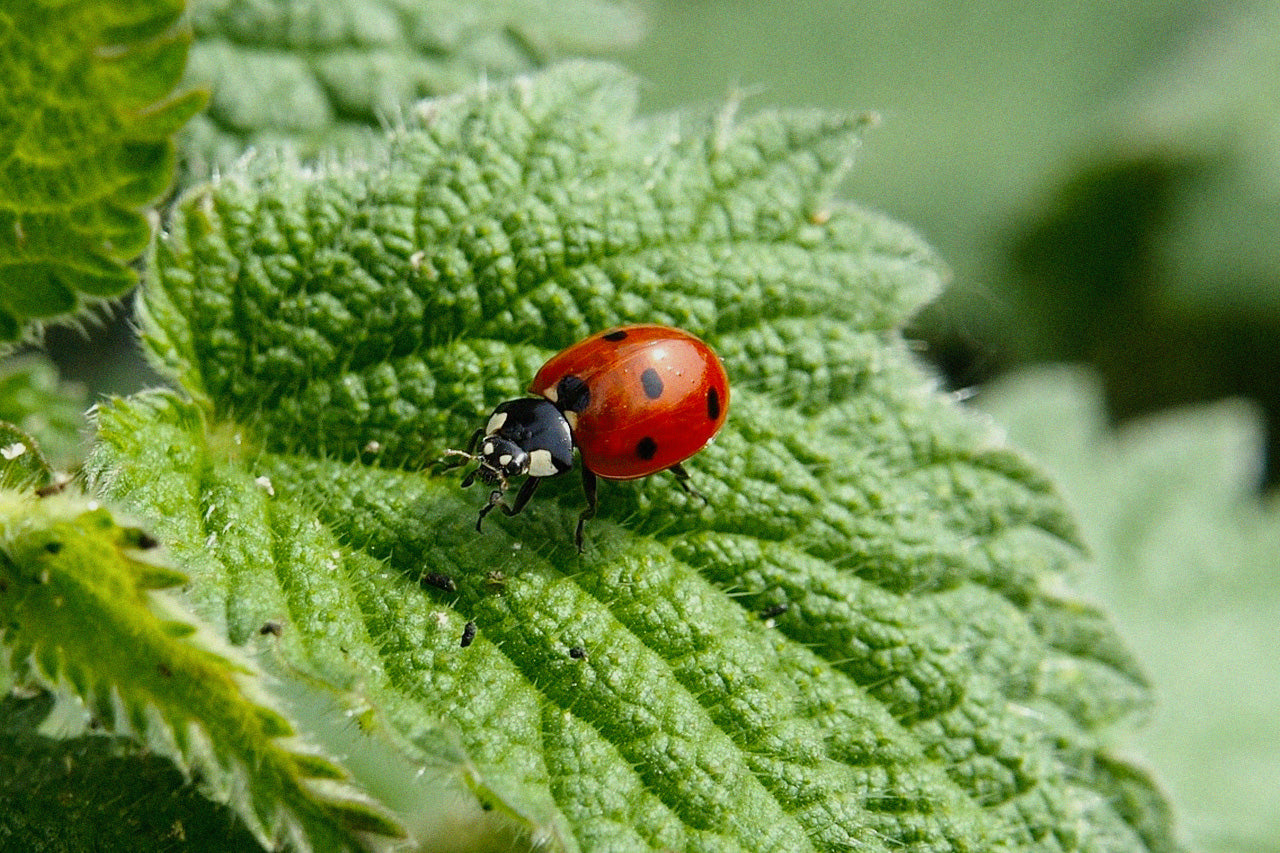
Gardening fun without pests
Whether in the GreenBox, a planter or the balcony box: there it is, your green pride and joy: the petunia has just started to bloom or the cucumber is just forming its first fruits. And something doesn't fit into the picture: black flies are flitting around. Or the table on which the GreenBox is standing is suddenly sticky, as is the petunia itself. You take a closer look and discover ... a large family of aphids!
If you - like us at BERLIN GREEN - opt for pesticide-free plant cultivation, you can never completely rule out an infestation of so-called "pests". This range of insects, which bring us gardeners no benefit but rather harm, can destroy our work and patience in a short space of time. Attracted by the sap of our green favorites, they devour them or suck them dry until the plants eventually die.

Aphids & Co
Who you are dealing with
Nearly no flower is immune from an invasion of aphids . These pear-shaped insects are up to 4 mm long and come not only in green, but in many different colors, e.g. orange, pink, white, brown or black. The larvae of the so-called whitefly can also be dangerous to our plants as, like aphids, they feed on the sap of the plants, which leads to their weakening and death. Whiteflies lay their eggs primarily on the underside of leaves.
Aphids such as whitefly larvae need proteins to survive. By extracting the sap from the flowers and leaves of our beloved plants, they literally suck up the plant's vital energy. However, as the plant sap contains more sugar than protein, they have to drink large amounts of it in order to get enough. They then excrete the excess sugar as "honeydew". This is the sticky coating on the substrate and leaves.
Every plant lover has probably also had to deal with funeral gnats . These are the tiny black flies that emerge when you water your plants or come into contact with the plant container. Here too, the larvae are the problem, feeding on the young roots of the plants.
If the pests find good conditions, which is likely to be the case in our well-tended gardens, they multiply extremely quickly. So keep your eyes open when admiring our green friends - which includes the underside of their leaves! That way we can intervene in good time if the worst comes to the worst.
What helps against insect pests
It is crucial to act as quickly as possible to prevent further growth of the insect pest population.
There are many chemical pesticides on the market to combat these so-called pests. But there is another way, because many of these pests can also be repelled by natural means. On the one hand, this protects the environment from further contamination by toxic chemicals, especially as we don't even need repellent substances for some methods. On the other hand, home-made control agents are likely to be significantly cheaper.

Rapid help with yellow tablets?
The use of so-called yellow boards can certainly be regarded as efficient. From an ecological point of view, however, it should be viewed with extreme skepticism. Yellow boards are yellow plastic discs that are placed near the substrate surface and attract insects with color and scent. Once attracted, the insects stick to the sticky surface and die there. However, it is not advisable to use yellow boards on balconies, in the open air or in greenhouses, as not only pests but also beneficial insects die on them.
In the case of advanced infestation by pests
It looks like parts of your pets are already completely weakened in the clutches of the pests? Then we advise you to cut off the infested parts and dispose of them as quickly as possible, even if your gardener's heart is aching. Now you can take care of the rest of the plant or the substrate in which it is growing, because adult animals are probably hiding all over the plant and their larvae may be hiding in the substrate.

Substrat-Aufbereitung
During production, our PlantPlugs are heated to such an extent that any eggs they may contain are killed. Aphids, black or white flies in the GreenBox must therefore have reached your protégés from the outside. This happens either because there is a plant nearby that is already infested with harmful insects or because vagabond insects have found their way onto your balcony or through an open window to your GreenBox or planters.
If you are using soil of unknown origin for a new planting, it is advisable to pre-treat it thermally, as pests or their eggs will not survive this process. We recommend spreading the potting soil to be used on a baking tray (no higher than 2.5 cm) and baking it at 200° C for about 20 minutes. Only bring into contact with the plants when they have cooled down.
Manuelles Vorgehen
If the plant is infested by a manageable number of individuals, we can remove the aphids or beetles individually.
Use of beneficial insects
In indoor gardening, an additional complication is that the insect pests are unlikely to encounter any natural predators indoors. Outside on the balcony or in the garden, the likelihood of beneficial insects such as ladybirds, wasps, flower flies or hoverflies getting to them is much higher. Even earwigs see aphids as a special treat. So if you discover such beneficial insects around your plants, let them do their thing, because their presence is a very good sign!
So-called threadworms have proven to be extremely effective against fungus gnats: These "Steinernema feltiae" nematodes (also SF nematodes), which are barely visible to the naked eye, are available in powder form, are briefly dissolved in water and then poured onto the infested substrate. The tiny animals do not harm the plant, but they feed on the larvae of the fungus gnat.
Cultivation of companion plants:
In order to continue to defend ourselves against pests outdoors or on the balcony, we can use so-called companion plants for fragrant protection or to attract the aforementioned natural predators. If we humans usually find the scent of the essential oils of many plants pleasant, it has a deterrent effect on aphids, mosquitoes, wasps or ants.
Lavender and the wonderfully hearty spice savory have proven to be particularly effective against aphids. The following plants also do a good job against pests:
Basilikum,Dill ,Salbei ,Petersilie ,Fenchel ,chives ,thyme ,oregano or coriander . While hoverflies are magically attracted to the flowers of dill,cornflowers and marigolds attract hatchlings.
With these substances you can defend yourself against fungus gnats:
Matches against fungus gnats
The sulphur contained in the ignition head of a match helps againstfungus gnat larvae in the plant substrate . This gradually dissolves in the irrigation water and kills the larvae, but does not harm the plants. Simply insert 1 unburnt match about 2 cm deep into 1 infested PlantPlug and replace after about 14 days. If the pot diameter is larger, use more matches accordingly.
What helps against vampires ...
The components of garlic, which is so healthy for humans, also have the opposite effect on the larvae of fungus gnats: Peel and cut1 clove of garlic into several pieces and sink them into the infested substrate. Correspondingly more toes for larger planters.
Koffeinhaltiger Kaffeesatz
Place thedried caffeinated coffee grounds on the substrate surface and work them into the substrate slightly. It is important to allow the coffee grounds to dry thoroughly before mixing to avoid the formation of mold.
Preparations against aphids and whitefly larvae
We can spray our plants with various mixtures against aphids or whitefly larvae, some of which are presented here.
The following applies to all treatments with the following mixtures:
-
Ideal treatment time: in the morning. This gives the plant enough time to dry.
-
The leaves should not be sprayed at times of strong sunlight, as the water droplets can act like small lenses that can focus the sunlight on the plant in such a way that burn marks appear on the leaves.
-
Spray the undersides of the leaves too!
-
Rain washes off (more the tops than the undersides of the leaves!). Re-treat if necessary!
-
Use the mixtures in carefully measured doses; their composition may sound harmless to humans, but above a certain concentration they cause stress for the delicate membranes of our plants.
Caffeine: What wakes us up has a fatal effect on aphids
When caffeine enters the body of aphids through inhalation or touch, it has a lethal effect. Once you have made your morning pick-me-up, pour boiling water over thecoffee grounds a second time and leave to cool. Pass the cold brew through a sieve and pour it into a spray bottle and spray the infested areas and lower leaf sides. (The desired effect cannot be achieved with decaffeinated coffee.)
Natronlauge
Another recipe for an ecologically sound treatment against insect pests is an alkaline solution of water and baking soda.
Recipe for approx. 1 liter of caustic soda
-
½ teaspoon of baking soda in
-
dissolve 1 liter of boiling water,
-
cool down and pour into a spray bottle
Neemöl
Neem oil is extracted from the seeds of the neem tree, which is native to subcontinental Asia. Due to its antiviral properties, it is also used in naturopathy.
Neem oil supports the gardening partnership in the fight against various pests, including aphids, spider mites and larvae.
Neem oil mixture for hard-leaved plants
-
10 ml neem oil on
-
1 liter of water.
-
Put both ingredients in a spray bottle and shake very well before each treatment.
-
Forsoft-leaved plants (e.g. B. cucumbers), a mixing ratio of 5 ml neem oil to 1 liter of water is recommended.
-
The interval between treatments should be 4 - 5 days.
-
In the doses used, neem oil is completely safe for human consumption. However, the oil contains bitter substances. Therefore, fruits or leaves intended for consumption should be washed off before preparation.
Härtere Bandagen:
Ökologische Seifenlauge
Basic recipe for approx. 1 liter of lubricating or gall soap suds:
-
Crush up 30 g of solid lubricating or gall soap a little, place in a container
-
Add 1 liter of boiling water (this is the best way to dissolve the soap)
-
Stir the lye until the soap has dissolved
-
Pour the cooled lye undiluted into a spray bottle
-
After treatment, it is best to store the lye in the refrigerator
Die Geheimzutat:
The lye alone didn't have the desired effect on the second try? Try it with
-
1 EL high-proof alcohol (Prima Sprit or vodka) on
-
1 liter of soapy water
-
Shake well in the spray bottle.
A rapeseed oil treatment against pests:
Mild for the environment and tough on aphids & Co is treatment with a mixture of rapeseed oil and water. If the affected areas are sprayed with the diluted rapeseed oil, the fat forms a film over the insects. This prevents the pests from absorbing oxygen.
Recipe for approx. 250 ml rapeseed oil mixture:
-
50 ml rapeseed oil and
-
200 ml cold water
-
Pour into a spray bottle,
-
shake very well before each use!
We wish you every success in combating unwanted pests and the best harvest from your indoor and outdoor garden!

